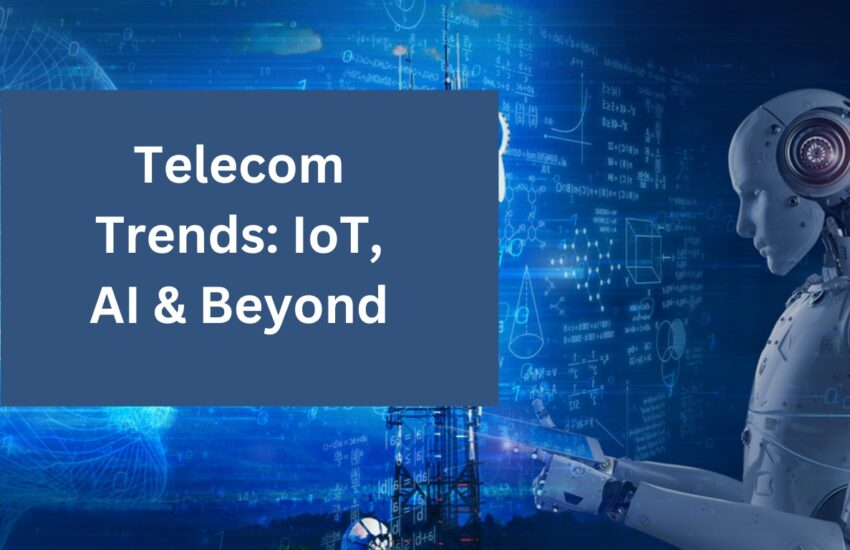Emerging tech like IoT and AI transform telecom. IoT introduce rapid shifts like 5G’s ground breaking speed. By 2026, the projected market could reach $650.5 billion . AI improves telecom by streamlining networks and predicting outages.
AI also helps decode customer behavior for tailored services. Digital revolution brings cybersecurity issues due to increased vulnerabilities.
Edge and cloud computing address these telecom challenges. They offer real-time data processing, scalability, and cost-efficiency. Sustainability is also prioritized with renewable energy and e-waster e cycling. There’s much to learn about telecom’s future.
Exploring5GTechnologyandIoT
5G and IoT offer unprecedented speed and connectivity. By 2030, IoT devices may reach 30 billion. This integration is shifting the telecom paradigm.
Telecom operators are deploying IoT-oriented LPWANs. This burgeoning market could reach USD 650.5 billion by 2026.
5G reshapes IoT with high-definition streaming and low latency. 5G’s connectivity stack may surpass other technologies by 2023. This dominance will enhance IoT integration opportunities.
Businesses are expanding 5G, enabling more digitization. 5G and IoT synergy boosts the telecom sector. This signifies seamless, high-speed connectivity in the future.
Artificial Intelligence inTelecommunications
5G and IoT are transforming telecom with high-speed connectivity.AI further shifts this landscape by optimizing networks. It predicts outages and improves traffic flow. AI’s analytics offer predictive maintenance and customer insights.
AI’s role in predictive maintenance is transformative. It anticipates network failures, reducing downtime. AI offers a proactive approach to network management. AI-powered diagnostics enhance network efficiency.
AI also provides customer insights, improving service delivery. It deciphers customer behavior for personalized services.
This improves satisfaction and boosts industry growth.AI redefines telecom operations. It optimizes networks, predicts maintenance, and uncovers customer insights. As we embrace AI, telecom’s growth and innovation are assured.
Cybersecurity Challenges in the Telecom Industry
The telecom industry is grappling with IoT and AI integration, highlighting the importance of cybersecurity due to increased vulnerabilities. The technology, while promising, also introduces new risks and makes network security crucial.
Poorly secured devices can bemanipulated by hackers, causing data breaches and losses. The digital landscape changes constantly, and so do cyber threats, posing new hurdles.
Improving IT infrastructure, talent, and procedure scan help tack let his issues. It’s crucial to implement threat detection, incident response, and prevention. The industry needs to proactively identify and mitigate risks to prevent crises.
Cybersecurity in telecom is about more than just network protection; it’ s about safeguarding digital assets and building consumer trust. Despite challenges, the industry’s proactive strategies are leading towards a safer digital future.
The Impact of Edge and Cloud Computing
Edge and cloud computing have revolutionized telecom. Edge computing reduces latency and enhances real-time data processing. It’s crucial for IoT, autonomous vehicles, and smart cities.
Cloud computing has transformed network management. It allows forum matched scalability and cost savings. Telecom IT spending on cloud could hit 26% by 2024.
Software-Defined Networking(SDN) simplifies network configuration. It enhances flexibility and efficiency, liberating operators. This approach fosters a more agile telecom sector.
Sustainable Practices in Telecommunications
The India Telecom News industry is adopting sustainable practices. It’s shifting towards renewable energy an de-waste recycling. Green technologies are now essential for telecom firms. They’re reducing carbon emissions and energy use.
This ensures the industry’s long-term survival. E-waste recycling is becoming popular. Discarded telecom equipment is being repurposed.
This minimizes land fill waste. Telecom firms committie environmental protection. They’re proving profit and ecology can coexist. This shift aligns industry growth with environmental goals.
Frequently Asked Questions-
Q- What are some emerging technologies driving changes in the telecom industry?
A-Emerging technologies such as IoT (Internet of Things) and AI (Artificial Intelligence) are driving significant changes in the telecom sector, revolutionizing how networks are managed and how services are delivered.
Q- How does AI contribute to the improvement of telecommunications services?
A- AI plays a crucial role in optimizing network operations, predicting outages, improving traffic flow, and providing insights into customer behavior. This enhances efficiency, reliability, and the overall customer experience.
Q- What cybersecurity challenges does the telecom industry face with the adoption of new technologies?
- The integration of new technologies like IoT and AI brings about cybersecurity challenges such as increased vulnerabilities and the risk of data breaches. Ensuring robust security measures becomes essential to safeguard digital assets and maintain consumer trust.
Q- How do edge and cloud computing impact telecom operations?
A- Edge computing reduces latency and enables real-time data processing, while cloud computing offers scalability and cost savings. Together, they revolutionize network management, enhancing efficiency and agility within the telecom sector.
Q- What sustainable practices are being adopted by the telecom industry?
- The telecom industry is increasingly adopting sustainable practices such as renewable energy usage and e-waste recycling. These initiatives aim to reduce carbon emissions, minimize waste, and align industry growth with environmental goals.

